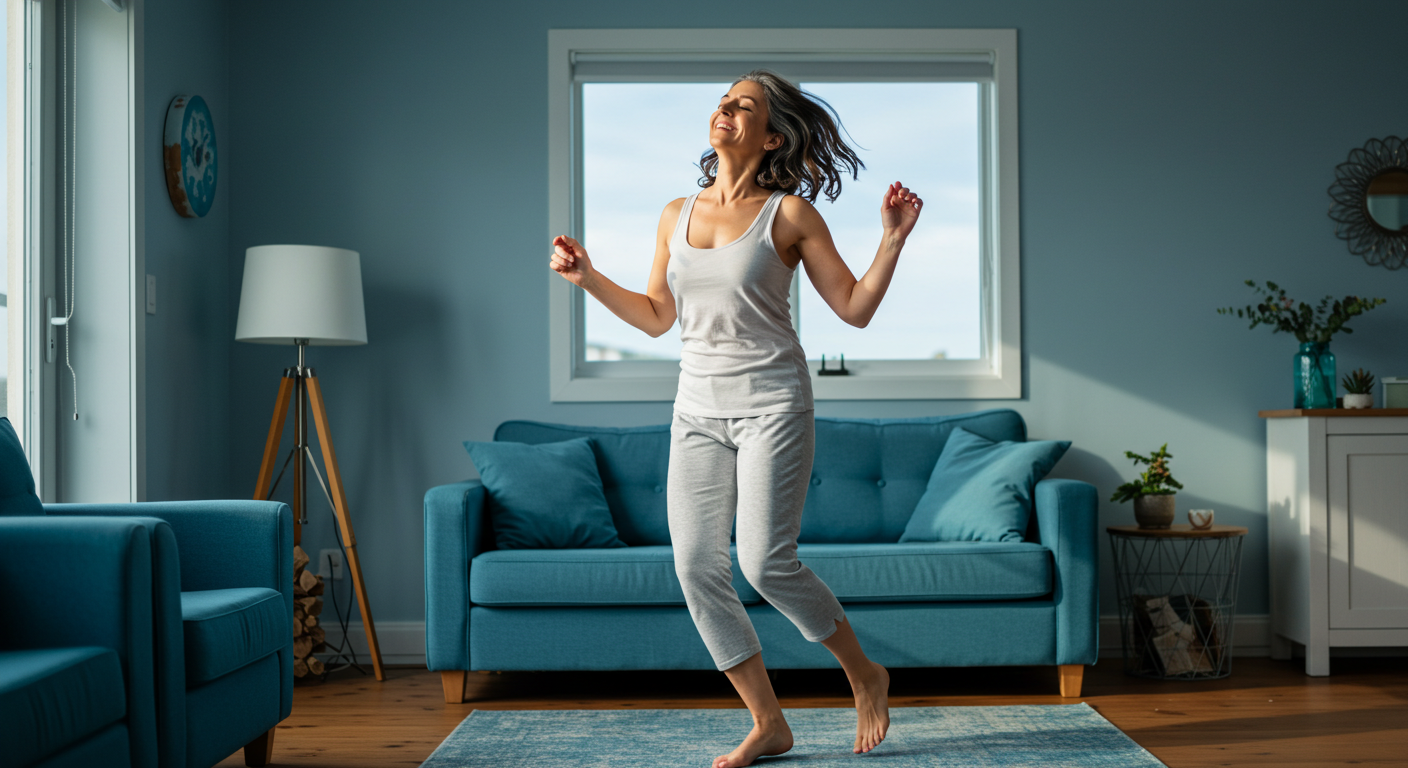
When Your Body Becomes Prayer: How Movement Heals Your Mind
If you've ever felt joy bubble up while dancing in your kitchen or experienced a sense of freedom while moving to music, you've touched something profound. Dance isn't just physical exercise or entertainment. It's actually one of the most powerful ways to restore mental clarity, lift your mood, and reconnect with the joy that daily stress can steal away. Let's explore how movement can become medicine for your weary mind.
What Dancing Does to Your Brain
Dancing differs from other forms of exercise because it activates multiple parts of your brain simultaneously. When you move to rhythm, you're strengthening sensorimotor skills, which enhance mental coordination and overall cognitive performance. This simply means your brain gets better at receiving information and responding appropriately.
Dancing harnesses neuroplasticity, your brain's remarkable ability to form new connections. When you learn a new routine or even just move freely to music, you're encouraging the growth of fresh neural pathways. This particularly benefits regions involved in executive function, spatial recognition, and long-term memory.
What's especially wonderful for women dealing with mental exhaustion is that dancing to music stimulates your brain's reward centers, producing endorphins and increasing serotonin levels. This natural mood boost can feel like a gentle reset for your emotional state.
Movement as Medicine for Mental Health
If you're struggling with depression, anxiety, or feeling emotionally overwhelmed, dancing might seem like the last thing you want to do. But research reveals encouraging results when it comes to movement and improved mental health outcomes.
Thanks to the boost in serotonin levels that occurs during dance, participants often see notable improvements in mood. This effect is so significant that dance and movement therapy (D/MT) is now used to treat complex mental health conditions, including PTSD.
Additionally, dance often involves social connection, which is crucial for brain health. For women feeling isolated or disconnected, group dance classes or even dancing with family members can provide meaningful human connection alongside the physical benefits.
Protection Against Cognitive Decline
If you needed further convincing that dance benefits brain health, participating in it has been linked to a significantly reduced risk of developing dementia and Alzheimer's in a 21-year long study published in the New England Journal of Medicine.
This protective effect likely comes from the combination of physical movement, cognitive challenge, social interaction, and emotional expression that dance provides. It's like a comprehensive brain workout disguised as fun.
Simple Ways to Add Movement to Your Life
You don't need formal dance training or perfect coordination to experience these benefits. Here are gentle ways to incorporate healing movement:
Kitchen Dancing: Put on your favorite songs while cooking or cleaning and let yourself move freely. No one's watching, and there's no wrong way to do it.
Worship Through Movement: Many find that moving during worship music deepens their spiritual connection while providing physical and mental benefits.
Family Dance Time: Create regular dance sessions with your children or spouse. It's bonding time that also supports everyone's brain health.
Online Classes: Try beginner-friendly dance videos at home where you can move at your own pace without self-consciousness.
Movement as Spiritual Practice
There's something deeply spiritual about expressing yourself through movement. Throughout Scripture, we see examples of dance as worship and celebration. When you allow your body to move freely, you're engaging in a form of prayer that doesn't require words.
For women feeling spiritually disconnected, dance can become a bridge back to joy and wonder. It reminds you that your body is fearfully and wonderfully made (Psalm 139:14) and capable of expressing emotions that words can't capture.
Finding Your Rhythm
If you've been feeling stuck, overwhelmed, or disconnected from joy, consider inviting more movement into your life. Start small, be gentle with yourself, and remember that the goal isn't performance but restoration.
Your brain was designed to find healing through movement. When you dance, you're not being frivolous or self-indulgent. You're actually stewarding your mental health in a way that honors how God created you to function.
For more strategies to support your brain health and emotional wellbeing, explore the 12 One-Minute Habits to Rewire Your Brain. If you're ready for personalized support in finding practices that restore your joy and clarity, consider a free clarity call.
